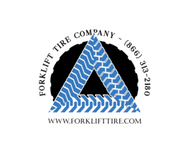6th Mar 2020
Scissor lifts play an important role when it comes to material handling operations that require elevation.
When it comes to safety it is always important to ensure that they are operated by trained scissor lift operators. Inspections and frequent maintenance will also play an important role when it comes to safety.
Even with these measures in place, scissor lifts remain one of the most dangerous materials handling equipment and a lot of precaution still needs to be observed during operations.
Some of the dangers you need to look out for while operation scissor lifts are:
Falling Off The Scissor Lifts
Scissor lift guard rails usually play an important role in securing the safety of the scissor lift operators at elevated heights as they restrain them from falling.
As a measure of precaution, they should be checked before and after operation to ensure they can perform their functions optimally.
Operators are also prohibited against standing on the rails as the risk of falling off is increased.
Tip-Over by Strong Winds
Scissor lifts are ideal for use outdoors for a wide range of tasks like installing overhead signs.
However, the scissor lifts may not be very helpful when the work area is exposed to very strong winds which can affect their stability and become a safety threat.
It is therefore very important that you avoid operating the scissor lift when the winds exceed 23 mph or 20 knots since such winds have the capacity to topple the scissor lift.
Instability on Uneven Ground
Thanks to the design of the scissor lift it is recommended that you operate them on a relatively level surface. Manufacturers also specify for you the recommend angle or maximum slope that is safe for operation.
If you position the scissor lifts on any uneven ground that exceeds the permitted angles and slope gradient, they will lose stability and tip over immediately you raise the load since their center of gravity is displaced.
Tip-Over Due to Overloading
Just like any other material handling equipment scissor lifts are also designed to handle a specific amount of weight.
Therefore, when they are overloaded, they become highly unstable once they are elevated exposing them to tip-over accidents.
To avoid the potential damage and fatal injury it is important to stay within the rated weight limit of the scissor lift.
Electrocution by Power Lines
Some tasks will require you to operate the scissor lifts very close to power lines. Since in such cases the threat of electrocution is very real, it is important to ensure you position the scissor lift at least 3 meters away from the power lines.
All power lines need to be treated as energized although it would be more prudent to request the power line workers to de-energize them if you are forced to come too close.
Article Summary:
Scissor lifts are very efficient for material handling functions; however, they can also be very risky to operate and therefore proper precaution needs to be taken.
Some of the dangers of operating scissor lifts are:
Operators falling off damaged rail guards.
Strong winds tipping over the scissor lift.
Toppling over on uneven ground or slope.
Overloading which leads to tip-overs.
Electrocution by power lines.
Forklift Tire Company is one of the largest suppliers of tires for material handling equipment in the USA. We are happy to help you find the right tires for your scissor lifts. Visit our online store here for great discounts or email us at sales@forklifttire.com, our customer service team is ready to assist you.






